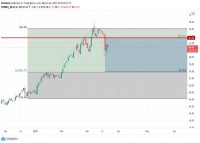|
Microfinance is defined to be providing small loans to poor people who are traditionally excluded from the financial system. Microfinance is a powerful tool to fight poverty. Microfinance means building financial systems that serve the poor and helps them raise income, build their assets, and cushion themselves against external shocks. Microfinance will reach its full potential only if it is integrated into a country's mainstream financial system. According a CGAP survey almost 72% of people in Muslim countries do not use the formal financial services because financial system is interest-based which is prohibited in Islam (Karim, Tarazi and Reille, 2008). The Islamic world is enormous with approximately 1.2 billion people across different countries. However, poverty is rampant and widespread across the Islamic world. Access to finance is very low based on their religious beliefs. This is a huge population under poverty and needs immediate and significant consideration to achieve the goal of making poverty history by 2015 as pledged in the Millennium development goals. These poor Muslim micro entrepreneurs need and demand access to financial services which do not compromise their religious beliefs of interest prohibition. Their demand can be met by designing financial products which are compatible with norms of Islamic finance which are based on prohibition of interest, avoidance from Gharar, Halal or permissible use of funds and non exploitation. The Islamic alternative to interest-based conventional loan is partnership based, trade based or lease-based credit that permits the ownership and/or use of commodities or physical assets needed for productive enterprise. Partnership based modes work on profit and loss sharing and there exists a mutual agreement between financier and micro entrepreneur for a specific business. Combination of business contracts in this category includes Mudaraba, Musharka and diminishing Musharka. Our current write up is focused only on Mudaraba. What is Mudaraba Mudaraba is an Arabic word which means a business (project) in which capital is provided by one party (a company or individual) while effort and skill are contributed by the other party (beneficiary, entrepreneur or borrower). "Mudaraba" is a kind of partnership where one partner provides financial capital or (Capital) to the other for investing it in a commercial enterprise. The owner of financial capital is called "rabb-ul-mal", and the partner with entrepreneurial skills is called the "Mudarib". Work and management is the sole responsibility of Mudarib and "Rabb-ul-Mal" or capital owner is a sleeping partner. The capital owner has a choice to impose a restriction on "Mudarib" about the nature of business for investment. If he imposes a restriction on "Mudarib" this will be called as "Restricted Mudaraba" otherwise it will be "Unrestricted Mudaraba". The capital owner can engage more than one person as "Mudarib" but for the sake of simplicity we will only consider a two-party Mudaraba. Distribution of profit in Mudaraba It is necessary for the validity of Mudaraba that profit sharing ratio is agreed between the parties; right at the beginning of the contract profit sharing has to be in proportionate terms and a "Lump sum" amount cannot be allocated either to capital owner (Rabb-ul-Mal) or to the Mudarib. Profit Sharing ratios may take many variations under different situation. Share in expected profit is the reward for both parties. "Mudarib" can claim any compensation as salary for the work he has done. However he can claim logical business expenses on actual basis subject to certain conditions. If the Mudarib has undertaken more than one business initiatives and has incurred loss in some transactions and has gained profit in some others, the profit shall be used to offset the loss at the first instance, and then the remainder, if any, shall be distributed between the parties according to the agreed ratio. In case of overall loss the capital owner will lose his capital and "Mudarib" will lose his potential reward from profit. Neither party can claim financial compensation in case of loss. Termination of Mudaraba The contract of Mudaraba can be terminated at any time by either of the two parties. The only condition is to give a notice to the other party. However to avoid adverse effects for both parties they can specify the conditions which may lead to termination of Mudaraba while entering into the contract. A Mudaraba Model of Microfinance Under a Mudaraba contract the bank provides the capital needed for a micro enterprise while the micro entrepreneur offers labor and expertise. The profits (or losses) from such financing are shared between the bank and the entrepreneur at a fixed ratio. Financial losses are assumed entirely by the microfinance program; the liability of micro entrepreneurs is limited to their time and effort. The contract between the Microfinance program and the entrepreneur is known as restricted Mudaraba because the Microfinance program agrees to finance specific business activities by micro entrepreneurs and to share relative profits according to an agreed percentage. To engage in Mudaraba transactions a bank must meet the following legal obligations:
Assumptions of the Model
A person approaches the Islamic Microfinance program with his request of financing. A loan officer from the program will check the qualifying criterion and if qualified will ask about his/her business activities. By interviewing client Loan officer assesses the suitable product. If the business nature of the customer is such that it is possible to calculate the profits easily he will adopt Mudaraba as the right product to be offered to client. We suppose that prospective "Mudarib" is a grocery store owner and he wants to add a cold dink corner to his existing business where he will be selling cold drinks of a famous brand like "Coca Cola or Pepsi". Since being the famous brand sale and purchase prices are known and profits can be calculated. It is assumed that prices and profits margins do not change over the span of Mudaraba so that assumption of fixed profit remains true. Famous cold drink brands provide sellers with deep freezer to chill their products free of cost and electricity charges are to be paid by seller. It is assumed that prospective "Mudarib" is able to calculate the electricity cost of the deep freezer. Such an understanding of cost is necessary as he will not be selling cold drinks alone but a variety of other items as well. Upon getting all the necessary details and successful completion of required verifications Islamic Microfinance program approves his application and enters into Mudaraba agreement with him on following terms and conditions: i. Contribution of Islamic Microfinance program will be Rs, 10,000 and the "Mudarib" will contribute by his labor. ii. Profit sharing ratio is 20:80 i.e. Share of Islamic Microfinance Program will be 20% while that of Micro enterprise or Mudarib is 80%. iii. Tenure of Mudaraba will be one year. iv. As Microfinance program cannot remain partner for indefinite period. For successful completion of Mudaraba "Mudarib" or micro enterprise will purchase the capital invested by the Microfinance program over the period of Mudaraba. For the sake of simplicity it is assumed that Invested capital is divided into 12 equal shares and "Mudarib" will buy one (01) share on monthly basis. Profits will also be shared on Monthly basis. In this case "Mudarib" will buy a share worth Rs.833.33 on Monthly basis or 8.33% of total share. Now the amount disbursed to the Mudarib for onward investment in Cold drinks business. According to our assumption of fixed profit micro enterprise earns a profit of Rs. 2000 till the end of 1st month. During the 1st Month Microfinance program was 100% owner of capital so it will receive Rs. 400 as profit share while the profit share of micro enterprise or "Mudarib" will be Rs. 1400. As per agreement micro enterprise will bur a share from invested capital worth Rs. 833.33/. Total payment by the "Mudarib" to the program will be:
The second month will start in a way that Microfinance program has sold one share from its total ownership of capital. Now Microfinance programs own 91.67% of the total capital and will be entitled to profit share according to its capital ownership. Share of capital sold to the "Mudarib" belongs to him and he has right over 100% of the profit generated by this unit or share. Now suppose that micro enterprise earns a profit of Rs.2000 during second month as well. 91.67% of total profit or Rs. 1833.4 will be shared according to profit sharing ratio. Total payment by Mudarib at the end of 2nd month will be:
We can note that "Mudarib" or micro enterprise has to make a
payment less than what he paid at the end of 1st month. Now the 3rd month
will start in a way that share of Microfinance program has reduced further. At
the start of 3rd month Microfinance program owns 83.33% and its profit share
will be less accordingly. Micro enterprise will have to make even lesser
payment at the end of 3rd month. Similarly ownership and profit share of micro
enterprise will rise in subsequent month while for Microfinance program both
will recede over time. At the end of 12th month equity share of Microfinance
program will be zero and Mudaraba will conclude. We can summarize a sample
repayment schedule in a tabulated manner for better understanding. Compared to conventional microfinance programs which adopt an
easy methodology of repayments in equal monthly installments this is rather
complex to understand and manage. Such a program has many built in challenges
which can be summarized as follows.
Challenges for the Model
Since Islamic Microfinance is a new phenomenon and, like every
other program, has its own challenges. Every challenge needs to be considered
and explored in order to find a way out.
Monitoring of Loan: Monitoring of a loan is important
for each microfinance institution (MFI). Loan monitoring is very important for
effective loan utilization and for timely repayments. Higher repayment rates
drives profitability and enables MFI's to become price competitive
profitability of MFI's. Higher repayment rates provide MFI's an opportunity
for expansion and outreach. Effective loan monitoring helps MFI's overcome the
some of the challenges like asymmetric information, adverse selection and
moral hazard. It also helps MFI's improve their delivery mechanism, remove
bottlenecks and design new products and services. Mudaraba is the riskiest of all the financial products, since
the capital (fund) provider has no "real" control over the management, while
fully responsible for any financial losses arising from the business. Under a Mudaraba arrangement profit is shared on the basis of pre determined ratios
while financial loss is to be absorbed by the Islamic Microfinance institution
only. Such a situation when financier has no direct control over financial
capital may lead to agency problem. Agency problem exists when the borrower
may not work sincerely thinking that he has nothing to lose financially in
case of business failure. In our example he may not give proper time to his
cold drinks business, does not maintain proper backup inventory and variety of
other reasons. This will put an Islamic MFI under difficult situation and its
outstanding portfolio will be at risk which has further implications.
Microfinance experience suggests that borrowers show good repayment behavior
at the start of a loan and tend to default on later stages. In our example,
risk arising out of agency problem will be maximum at the start of loan and it
will decrease with every installment. With more shares "bought back" by the "Mudarib" his behavior will become more of principle rather than agent.
Besides this there are other reasons which can play a role in risk management
of a Mudaraba contract. Firstly, Muslims opting for Shari'ah compatible products are
supposed to be devout Muslims who believe in the eternal concept of life, in
which honesty is reward able and dishonesty punishable. This is a non-material
incentive for people to be honest. Secondly, all financial Institutions tend
to have a long term relationship with their clients based on their repayment
behavior in case of borrowers. For this purpose they offer incentives in
repeat loan cycles like enhanced loan amounts etc and such incentives compel
borrowers to keep their credit history clean. On the same grounds there is a
financial incentive for entrepreneurs to be honest and behave in a way
acceptable to Islamic MFI.
Moral Hazard: Portfolio of the Islamic Microfinance
Institution will be at risk due to asymmetric information because principle or
capital provider has limited or imperfect information. On the contrary,
borrower of the money i.e. agent has exact and full information. Thus this
gives rise to the concept of moral hazard for the lending party i.e. Islamic
MFI. Research in the field of Islamic finance has outlined few factors that
can reduce agency problem for Profit and Loss sharing contracts. These are
business skill, business reputation, business commitment, financial health of
the project, length of the project.
Adverse Selection: Islamic Microfinance is a new and
emerging concept. When Islamic Microfinance Institutions are entering new
market and launching their initiatives in new place. They do not have complete
information and credit history of their new borrowers. They have to rely on
the available information and interview techniques of their prospective
borrowers. Loan monitoring becomes very important in such scenarios. By
exercising due diligence and effective monitoring Islamic Microfinance
Institutions can have a good start in terms of portfolio quality which is
required for their survival.
Uncertainty of profits: In our example we have assumed
that profits will remain fixed over time. This looks like a very
oversimplified situation. Even in a situation where it is possible to
calculate profits on the basis of sales and purchase it will be much difficult
to calculate exact profit. This is because sales always fluctuate depending on
different circumstances. In this case where micro entrepreneur can be trained
to obtain bills from his vendor and keep a track of daily sales on a simple
format. Since the product is being purchased from a vendor of repute, risk of
counterfeit bills or over invoicing is minimized. The situation can be more
difficult in situations where sales and purchase prices are unauthentic.
However investing in authentic brand names may be a good starting point for
Islamic Microfinance programs.
Uncertainty of payment amounts: The second difficulty
with this model is that borrower has to repay a different amount each period
(and the loan officer has to collect a different amount each period). This
makes it bit difficult compared with EMI arrangements. The margin for error is
high in these situations. However this can be managed to some extent by
rigorous training to loan officers. Once they have grasped the idea and the
logic behind such calculation then it will get relatively easy. Loan officers
usually have the ability to do mathematics and calculations. Under
conventional Microfinance programs loan officers has to perform calculation in
case of bullet loans. It is often argued that Micro entrepreneurs do not keep
accounts. This is partially true as they keep their accounts but in a very
informal manner. They always maintain a record of their credit sales to the
households, their sales and purchase. They always do calculate profits and
returns of their investments. This shows that they have calculation skills and
they need to be trained to change their way of book-keeping in a way that can
serve the purpose of the Microfinance program as well. Application of such a
model may be less hectic and more straightforward in other forms of trade like
livestock fattening where calculations will be easier.
Conclusion Microenterprises have a role to play in economic development of
poor countries. A World Bank study pointed out the advantages of
microenterprises as increasing the aggregate output, enabling the efficient
use of capital and labor, initiating indigenous enterprise and management
skills, bringing a regional balance, and improving the distribution of income.
Microenterprises can significantly generate economics activities, employment,
and demand and can contribute significantly to the economic development.
Access to financial resources is very important for economic development. Access to financial services remains low all over the Muslim
world partly due to religious beliefs. This gave rise to the evolution of
Islamic Banking to serve the Muslim population with violating their religious
beliefs. This new industry got a very welcome response and has witnessed
enormous growth since its inception. The development of Islamic Finance has
improved access to finance to some extent, but micro entrepreneurs remain
mostly excluded from financial services. They lack collaterals and are unable
to fulfill certain requirement to gain access to finance. Conventional
microfinance played an important role in providing financial services to poor
entrepreneurs on a collateral-free basis. Islamic Microfinance needs to be
developed in the same manner to help Muslim micro entrepreneurs. Islamic finance needs to be seen in a broader sense. It
promotes risk sharing, entrepreneurship, materiality, and non exploitation.
Islam prohibits one from involving in activities which are harmful for the
society as a whole. Islamic financial services have a good degree of
compatibility with microfinance. If promoted and developed properly Islamic
Microfinance can have a big impact on overall poverty and economic development
of many countries. Islamic law allows room for financial innovation, and several
Islamic contractual arrangements can be combined to design new products.
Islamic Microfinance is capable to adopt microfinance best practices without
compromise on Shari'ah compliance. Islamic Microfinance needs patronage
especially by Islamic financial institutions that have developed over time and
it will bear fruits and will contribute significantly towards poverty
reduction. This will be a significant step towards the Millennium development
goals.
Your feedback and comments
are very important to us, please feel free to contact the author via
email. |
Opalesque Islamic Finance Intelligence
Featured Structure: Islamic Business Contracts and Microfinance A case of Mudaraba, By Azhar Nadeem |
|





 RSS
RSS










